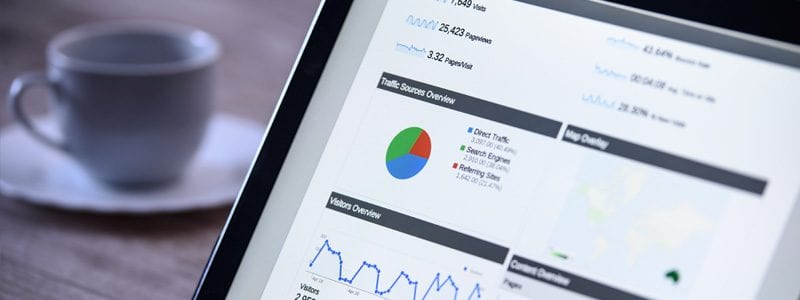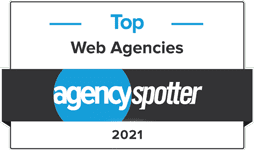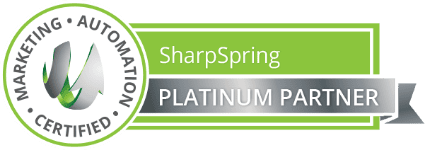
If you’ve worked with a marketing agency or hired a marketing pro, they have surely mentioned SEO and what needs to be done to please this picky animal. But many of the terms can be confusing, or acronyms, or both. So we’ve put together this glossary of need-to-know SEO terms for busy people who want to be well-informed about their search engine traffic.
0-9
301 Redirect – A rerouting of a web page. When a webpage address is changed or a new site is launched, 301 redirects automatically send visitors (and search engines) to the proper page(s).
A
ALT Text/Tag or Attribute – ALT is short for “Alternative”, so in this case, ALT Text is “alternative text” to describe an image. This is useful for both visitors using a screen reader and for search engines. Since search engines cannot see images, they rely on Alt tags/text to “read” your description of it. This is another way to show that your site offers information—in this case images—regarding your topic of choice.
Analytics – Google Analytics and other Analytics services offer tons of information about traffic to your site. This is the place to find out when people visit your site, what path they use to find you, how often they’ve visited, how long they stay on the site, where they’re located, and many other things.
Anchor Text – When you click on a link that takes you to a new page, the anchor text is the words that make up the link, usually blue and underlined. For example, if we’d like to offer you a link to our Marketing Fusion page, the anchor text in this case is “Marketing Fusion page.” Why does this matter? The anchor text signals to search engines what the destination page is about or where you’ll be going.
B
Blog – Coined in the 90’s from the word “web-log”, your blog is the ever-updating part of your site where you publish new content. Whether they’re news items or articles about your industry (like this), having a blog and adding posts to it is good SEO. Why? It accomplishes 2 things: new content shows search engines that you’re not a static site, and new content specifically on your topic is adding fuel to your SEO fire by talking more about your business and industry.
Bookmark – A link to a website that is saved for later reference. The more times people bookmark your site, the greater the indication that your pages have high-quality content.
Branded Keywords – Keywords that include the name of your company
Breadcrumbs – Displayed to a website visitor, breadcrumbs show you how the page you’re on fits in to the structure of the entire website.
For example: Cazarin Home > Cazarin Blog > SEO Glossary
C
Conversion Form – A form on your site that collects information from an incoming lead; it could be a Request for Quote, a Contact Us form, or any other type of form that counts as a lead for your business.
D
Domain – The main part of your site’s web address (example: www.yoursite.com). There could be subdomains before it, and there will be “slugs” after it, but it is the basic name of your site between the www and the .com or .net, etc.
Domain Authority – A value from 0 – 100.0 that indicates the SEO quality of the site, based on age of the site, size, and popularity. The higher the DA, the better. For example, google.com (and all of its subsidiaries) have a DA of 100, because what has more authority than Google?
E
External Link – A link from one website domain to a different one, whether outbound from your site to another, or inbound from another site to yours. These are key indicators to search engines.
F
Favicon – The small icon that appears in the tab of your web browser when you are on a page, usually one letter or a simplified version of a logo.
The Fold – The fold is the bottom of what can be seen on your screen without scrolling. So “above the fold” indicates the parts of your page that are seen first, without scrolling, and therefore get the most attention.
H
Headings – The headings of your site (using a H1 or H2 tag) are just what you’d expect: larger text like a headline. Search Engines look to headings to know the main topics of your pages.
I
Inbound Link – A link from another site that leads to yours. The more you have of these, the better, especially if that site is reputable. Search Engines see these as proof that your site is worth sending people to.
Internal Link – A link from one page on your site to another page on your site. For example, your Home page will have several internal links that bring visitors to other pages on your site.
K
Keyword – The words or terms that users enter into the search. Knowing what keywords people enter to reach you is important so that your marketing or copywriting team can include those in your content. Although keyword stuffing (using your target keywords many times in unnatural ways) is now a detriment to your ranking, your keyword should be used consistently and naturally throughout your site.
L
Link Building – Working to get more inbound links from other high quality sites.
Long Tail Keyword – A longer keyword that someone uses in search, typically 3-4 words or more. These are less commonly used than 1-2 word keywords. They’re more specific, which also means they are less competitive.
M
Metadata – Data that tells search engines what your website is about. This could include page title, meta description, or alt image tags.
Meta Description – A description of a webpage that you see along with page titles on a Search Results page. These should be written manually for each page to encourage users to click on your site. If not, search engines will usually pull out the first parts of text from that page.
mozRank – A ranking for a website from 0 – 10.0 provided by SEOMoz, determined by the number and quality of inbound links to that site–the higher the better.
P
Page Title – The title of a webpage, which is shown both at the top of your browser window and on a Search Results page. Keywords are usually used in page titles, and should be used at the beginning of the title for more SEO impact.
PPC (Pay-Per-Click) – Advertising method in which an advertiser puts an ad in an online advertising venue, such as Google adwords, and pays that venue for impressions of their ads or clicks on their ads.
S
SEM – Search Engine Marketing. Similar to its cousin SEO/Search Engine Optimization (getting your site to rank well organically), SEM includes both organic and paid mentions of your site, and is focused on increasing your visibility on search engine results pages.
SERP (Search Engine Ranking Page or Search Engine Results Page) – After you enter a search query into Google, Bing, or any other search engine, the SERP is the page that shows your results. With Google, this now can include any of the following: organic results, paid ads at the top and bottom in most cases, local results with map, business cards, shopping results, and more.
Sitemap – A document that maps out all of the pages of a given website so that search engines can properly index the site; usually created by the webmaster or special software, and usually accessible in the footer of a site.
Slug – the part of a url that follows the main domain name. For example, the word “/business” in this url: http://www.startribune.com/business/ or, for this page, /blog/
Spider – A program that systematically browses websites on the internet and indexes web pages and web content for search engines.
T
Traffic – The visitors to any page of your site.
U
URL – Uniform Resource Locator; the complete web address of any given page on the Internet.
For more on Search Engine Optimization and how Cazarin Interactive can help your site, contact us.





